RCAF/CFS Alsask Radar Dome
Just inside Saskatchewan and we’re talking no more than a hair’s-width from the Alberta border, there’s a curious structure. You can’t miss it, standing sentinel just outside the little community of Alsask along the highway between Calgary and Saskatoon. Just a little to the north and it’s that big giant golf ball – see it? This is the Alsask Radar Dome and today we’ll show you around a bit.
It’s decidedly strange and dominates the view on a little rise above the surrounding prairie. Evoking at minimum a double take and the requisite quizzical look is often followed by a mumbled “what the heck?!” directed at no one in particular. More puzzled thoughts and a little head scratching will follow.
RCAF/CFS Alsask Radar Dome: a Cold War relic you can tour. By Chris Doering & Connie Biggart (BIGDoer/Synd)
Be like Don…
Fenced in by razor wire…what is that thing and what purpose did it serve? These questions surely cross the minds of everyone on seeing this towering oddity. It’s military for sure and those forces’ trucks parked out front proof positive of that. It must be old and seems completely out of place among the adjacent farmer’s fields.
You’re looking at an installation put here to protect you, I and the “free” world (or minimally the US and ally Canada) from annihilation. A product of the Cold War, it’s part of a broad line of defensive installations built in anticipation of all out conflict and a sobering reminder of a frightening time. Not all that long ago in history everyone thought full on nuclear war as something inevitable. Not maybe, but a sure thing. You know…civil defence…duck and cover…those PSA “what does it mean when your hair falls out” films…eve of destruction stuff!
Today’s subject is the very last “Pine Tree Line” radar dome and that’s of many, many dozens that once existed across the nation. Their purpose was to scan the skies for approaching enemy aircraft or missiles. Part of CFS Alsask Saskatchewan it functioned as just one little cog in this early warning system.
You can come see if for yourself, so read on! BTW, loooong post warning but if you’re with us this far you kind of guessed that anyway, so grab a coffee and enjoy.
Paranoia and Fear.
The Alsask Radar Dome dates back to a time with the world on edge and the threat of a nuclear apocalypse imminent. Paranoia and fear ruled. The planet came that close to being blown to teenie-tiny bits and with every newscast came a feeling for dread. Did they push the button…are missiles incoming…and who’ll think of the children?
It’s two hated foes, armed with nukes, facing off and with Canada caught in the middle (over the Pole was the expected route). Two superpowers sparring, it’s little us (military wise) between it all and something needed to be done.
What we’re looking at here was built in response and it had a simple but important purpose. Operating night and day, good weather or bad, it functioned as part of a network of similar installations tasked with keeping watch on the enemy. Watch for planes! In support of the dome, a base was constructed at the north end of Alsask and home to a large contingent of military and civilian personnel. The base and dome are within sight of each other.
The Pine Tree Line was one of three such parallel network of domes and the most southerly. The others were the Distant Early Warning (DEW) Line in the far north (with some in the US and Greenland) and in between the Mid-Canada Line.
All these installations have long since been decommissioned and most demolished. The Alsask Radar Dome is the last one left from the Pine Tree Line and this makes it historically significant. How enemy threats are handled has greatly changed but for some reason this one survived unlike the others.
The Response.
Post Wold War Two, tensions between the world’s superpowers, the US on one side and the Soviets on the other, grew and grew. The arms race was on with each side flexing its military muscles and amassing atomic weaponry with which to smite the other.
The war machine readied for action and it’s hungry for blood. It’s the Uncle Sam vs the Soviet Bear and if the planet got blown away in the process, so be it. They had enough bombs to lay waste to the earth many times over, but it did little to deter the mood.
In anticipation of an attack – not a matter of if the enemy, the “Red Menace” those evil Russians, would drop the big one, but when – the North American Aerospace Defense Command or NORAD, was created. Note defense is spelled with an s and this is US form.
A joint US/Canada operation, Norad’s role was fairly straightforward but highly important. They’d watch the sky, 24hrs a day endlessly and report any finds to command HQ. Since the enemy would come in over the pole, and only over the pole, everything focused north. The military machine stood at the ready and could be scrambled at a moment’s notice should the call come in.
CFS Alsask and the Alsask Radar Dome.
Royal Canadian Air Force Station Alsask Saskatchewan, later Canadian Forces Station or CFS Alsask (sometimes called Canadian Forces Detachment or CFD Alsask) was completed in the period 1961-1963. The dome was one of the first things made ready and its location was just north of the base in town. The latter has long since been decommissioned but still party intact and we took a tour a few years back. Here: Canadian Forces Station Alsask.
We so want to play a round at the old base golf course and while a little overgrown, it wouldn’t matter. We’re such bad players that a hazard has little change on the outcome.
CFS Alsask and the Alsask Radar Dome were decommissioned in 1987 due of changing times and technology. It’s not that the threat was any less – it was and I guess probably always will be – but how its done is different now. The old enemy, the Soviets, are still looked upon suspiciously but as well many new players have emerged since. A giant complex looking only in one direction for incoming trouble hardly seems effective when the danger today could had be from any conceivable angle.
For a period after closing, the dome found a new life with NavCanada for general aviation monitoring, but this didn’t last long. For the next few decades it stood in basically in an abandoned state and suffered as a result. Birds got in and made a mess and graffiti covered many surfaces. Not a pretty scene.
The main support structure is completely metal and with two raised floors. These once housed all the transmitting and receiving equipment, computers, operations centres and offices. Outside a few odds and ends left behind, a crane lifting unit, precision equipment shipping container, some electrical cabinets, ductwork and a huge motor, the interior was mostly empty.
Parts of the radar assembly in the dome itself were also left behind and it’s massive. When in use this arm plus the dish (now gone) would slowly spin round and round (and round and round adnaseum) while looking for approaching aircraft. Demonstrating just how precision and balanced the whole assembly is, it can easily be rotated by hand. It’s protected from the elements by a structure made of interlocking fibreglass panels and these are thin enough to let some light pass.
In celebration of country’s 100th in 1967 sections of the dome were painted to represent the Canada Centennial Maple Leaf. The triangular shape of the dome sections leant themselves well to this angular design and even after more than fifty years they are still evident.
An open walkway on the outside of the Alsask Radar Dome was for maintenance and inspections. Our grandkid Ben who accompanied us on this adventure was brave enough to go up there, with an escort of course, but he’s the fearless type. As ten year old boys often are. To get there required climbing up a caged ladder on the exterior of the building from the a landing on the floor below. It’s way up and heights are not our thing!
Communication lines for the Alsask Radar Dome came by way of Alberta Government Telephones even though the building is technically in Saskatchewan by a smidgen. The dome is that close to that dividing line and the road out front aligns with the border. Old signage nearby marks underground cables and speaks of this arrangement.
The entire site is ringed with razor wire, reminding us this was a military installation of great importance. Old light poles stand vigil. A radar assembly bearing, a huge piece of finely machined metal was one item left behind and sits beside the building where unceremoniously placed many decades ago. It’s rather heavy to move. A sign marks the commander’s parking spot but he’s not been seen in a while.
The 44 Radar Squadron was stationed in Alsask and oversaw operations here.
More…
There were once three domes on the property, but two were made redundant not long after being built and subsequently torn down. Changes in technology meant that what once took many could now be done by one. There’s no evidence on site showing they ever existed but you can sort of figure where they were.
While the dome’s no longer needed and that’s for some time now, it’s interesting to note the threat has never completely vanished. Technology wise things have advanced far and keeping watch for bad guys can be done more discretely.
The Cold War lasted from the 1940s-1990s, with peak tensions in the 1950s-1970s period. It terrified a generation and changed the way many things were done. Today, the probability of nuclear war doesn’t seem forefront in the general public’s mind, but many world powers still have nukes.
Canadian Civil Defence Museum and Archives.
The radar dome building has been historically recognized for some time and for a few years now is in the hands of the Canadian Civil Defence Museum and Archives. They have been cleaning up decades of pigeon poop and making the site safe to tour. It’s a long and hard job but they’re a spirited bunch and we’ve known them for some time now.
The CCDMA from time to time allows the public to view the dome and it’s an amazing glimpse into the Cold War mindset of the period. They have a website where you can look up dates and times for this event. Here (new window and look for dome tours): Canadian Civil Defence Museum and Archives. Be sure to tell them we sent you and please offer up your love via a kind donation. Wear sturdy shoes too.
Canada’s place during the Cold War, its participation and preparedness, might be a mystery to most people which the CCDMA is working to change. It’s fascinating what went on and they can tell you all about it should you pay the dome a visit or see them at an event.
We’ve been fortunate to work with the group on a couple articles over the years and are always in awe of their knowledge and dedication. Team BIGDoer visited the Alsask Radar Dome with the group on several occasions. The first came in 2015 and just prior to them acquiring it, then again in 2019 and once more in 2023. Photos from each visit are included in this post and if anything clearly demonstrates the sheer amount of work done.
The volume of bird droppings alone could fill a dump truck or two and it all had to be manually shovelled out. Hazmat gear mandatory and let’s give them a slow, standing clap just for that alone. Graffiti removal has been a big project too.
In addition to the military trucks, the museum has a big collection of Cold War artifacts that it’s hoped eventually can be put on display at the dome. The amount of work is huge and while they as dedicated as they come, it’s a big mountain to climb.
2015…
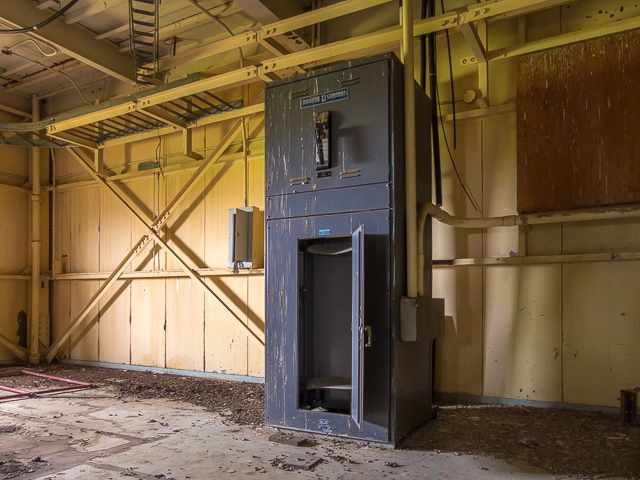
Odds and ends left behind.
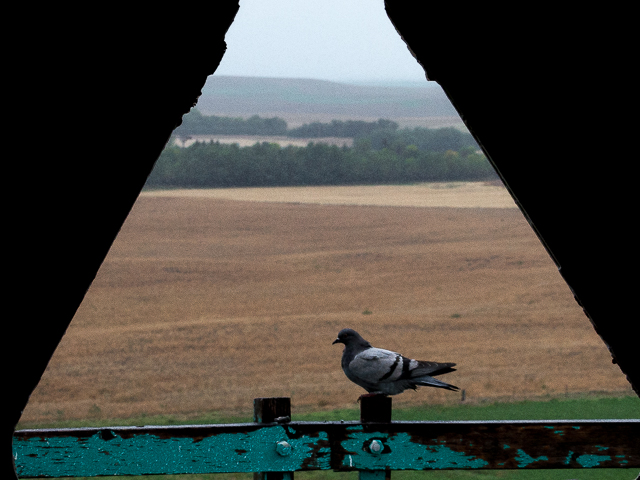
Pigeons made a mess inside.
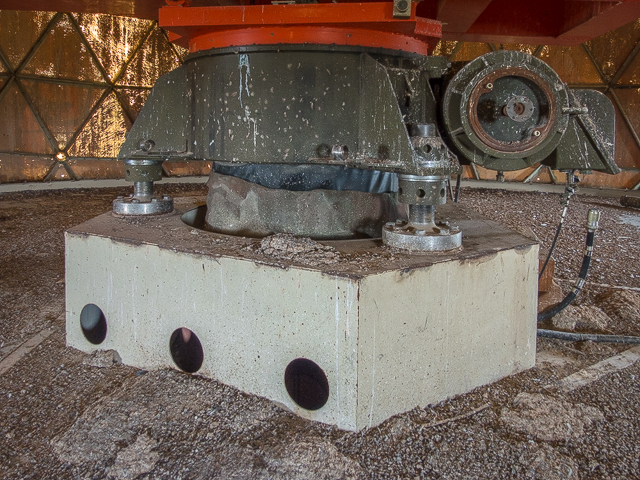
The droppings had be removed before tours could start.
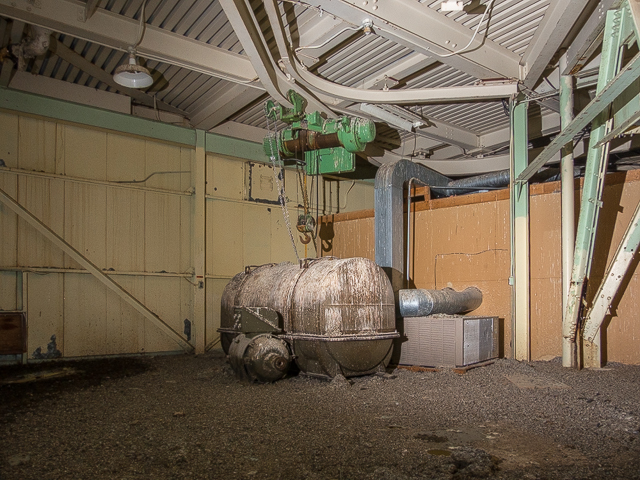
For shipping of delicate equipment.
The Town of Alsask.
Alsask: a portmanteau of Alberta and Saskatchewan. The dome and associated base helped the community thrive but today it’s a sleepy little backwater with a population just over a hundred. Like the dome, this community is in Saskatchewan but just a stone’s throw from the border. Interestingly, the Alsask cemetery is on the Alberta side.
Our latest visit to the Alsask Radar Dome happened almost a summer ago and we’re already itching to go back. We always find new angles to photograph and always learn something we didn’t know before.
Know more: (new windows) RCAF/CFS Alsask Radar Dome + Canadian Civil Defence Museum and Archives.
They’re saying…
“Chris and Connie have a unique way of documenting the places they visit, not copying the style or technique of others, but making it their own.” Alex Craig, Filmmaker.
More Cold War…
Cold War Bunker Revisted.
In Event of Nucular Attack!.
The Nearby Base…
Canadian Forces Station Alsask.
Stuff you’ll like…
Historic Hotels Cranbrook BC.
Old Slocan Highway by the Lake/
Snowplane.
Twilite Drive-in Wolseley.
Something to say and no one to say it to? Go here: Contact Us!
Date of Adventure: September 2015, April 2019 and July 2023.
Location(s): Alsask, Saskatchewan.
Article references and thanks: Fred Armbruster & Trent Holmes at the Canadian Civil Defence Museum, HistoricPlaces.ca, Book – Captured Memories – A History of Alsask and Surrounding School Districts, Canadian Forces records and University of Regina.
2019…
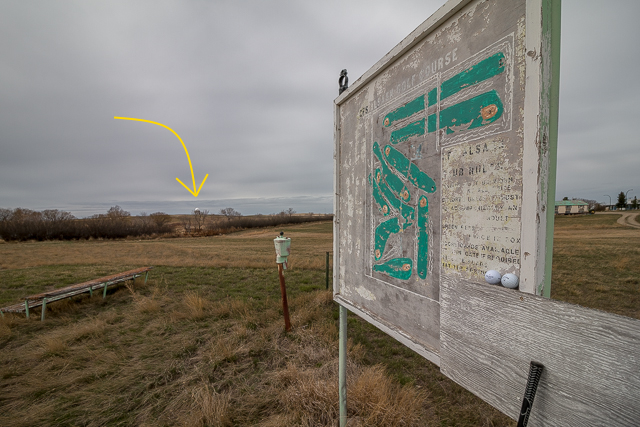
The Alsask Radar Dome from the old base golf course.
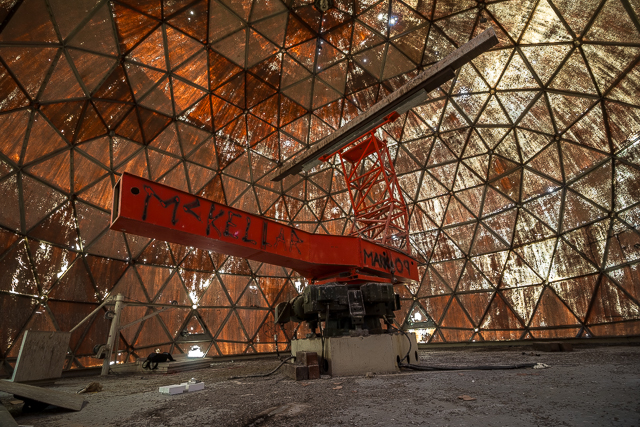
What’s left of the radar assembly inside.
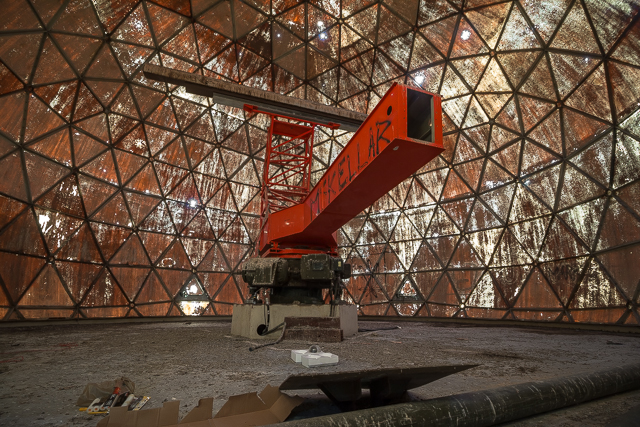
Being under the dome is a surreal experience.
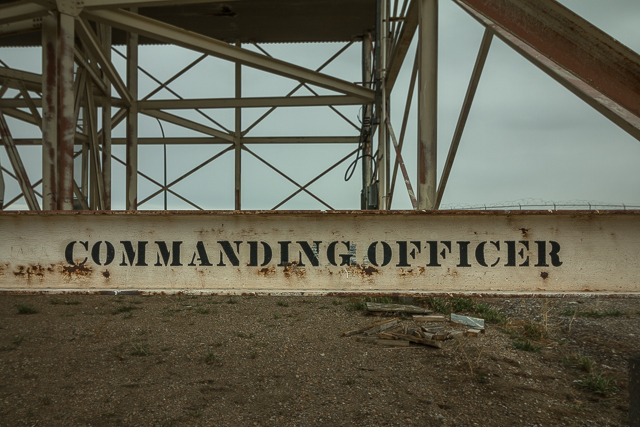
Parking for the Commanding Officer.
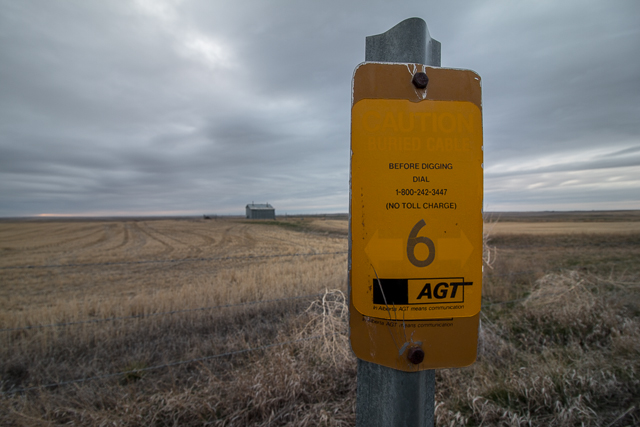
Communications lines came in from Alberta.
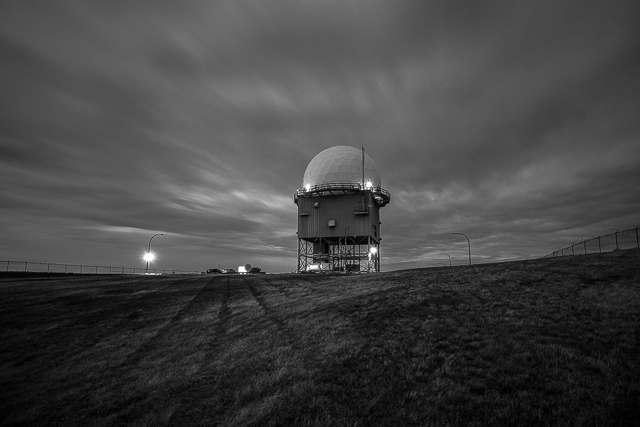
Later that night…
2023…
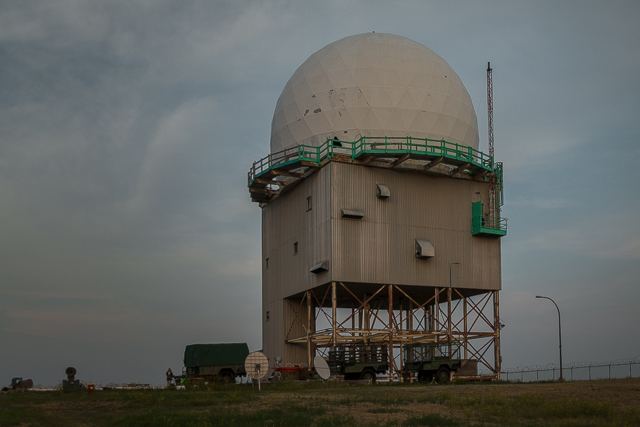
We’re back and it’s looking better and better!
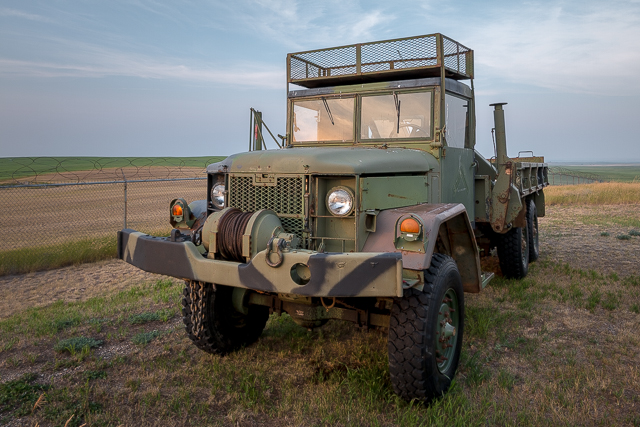
Military trucks are a recent addition and help complete the scene.
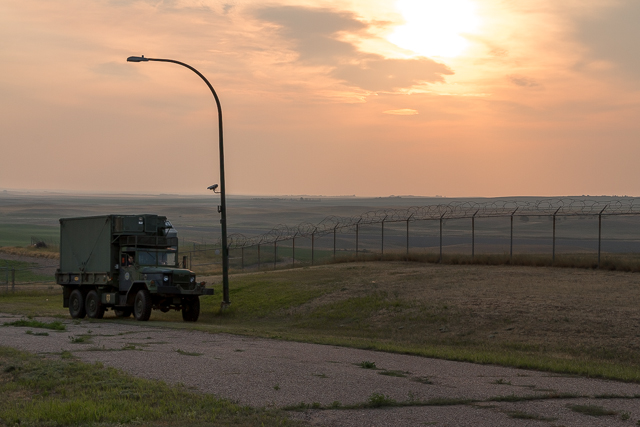
Gorgeous sunsets out this way.
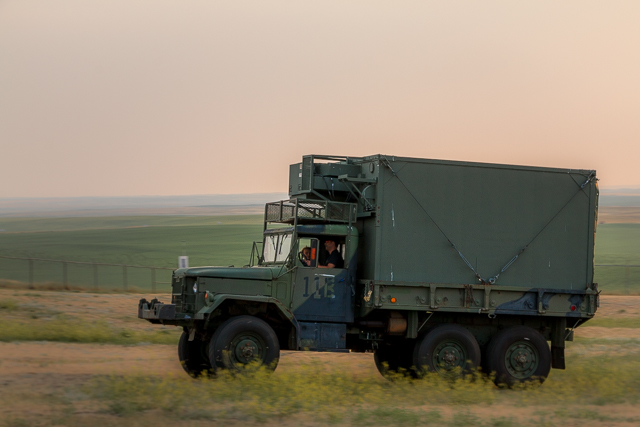
A little fun before getting down to business.
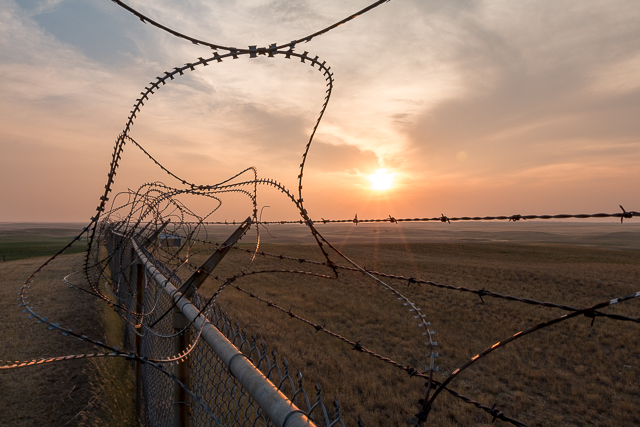
Razor wire means trouble.
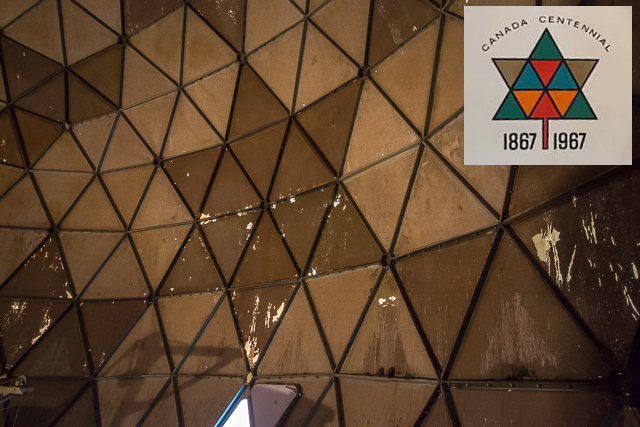
Painted up like a Canada Centennial (1967) Maple Leaf.
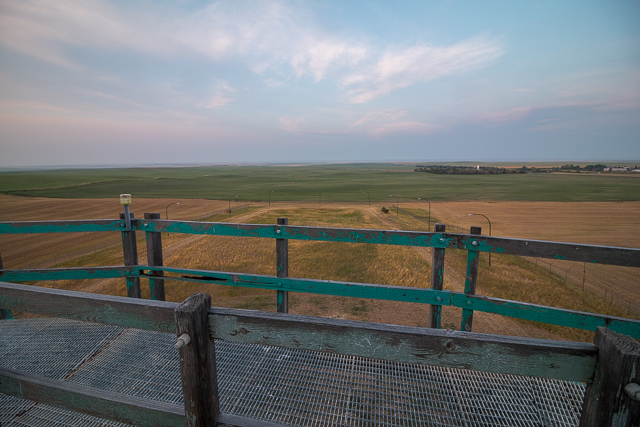
The view east and across the endless Saskatchewan plains.
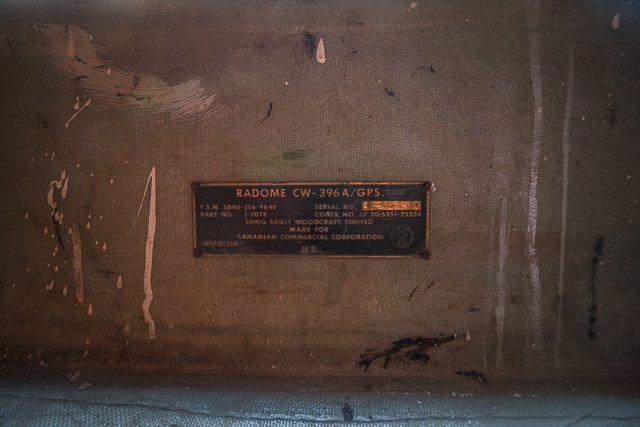
A plate from the maker of the dome panels.
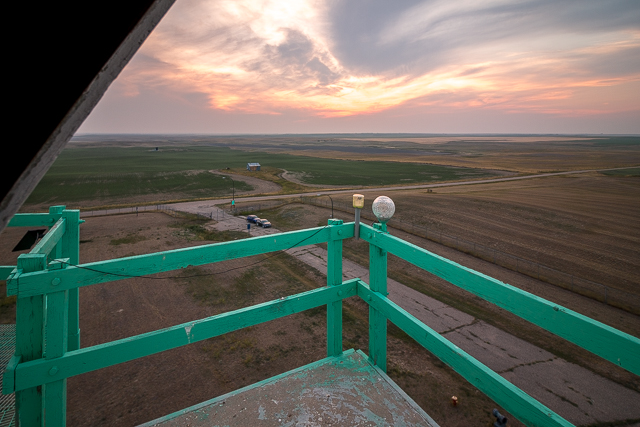
The view west – road in back marks the Saskatchewan/Alberta border.
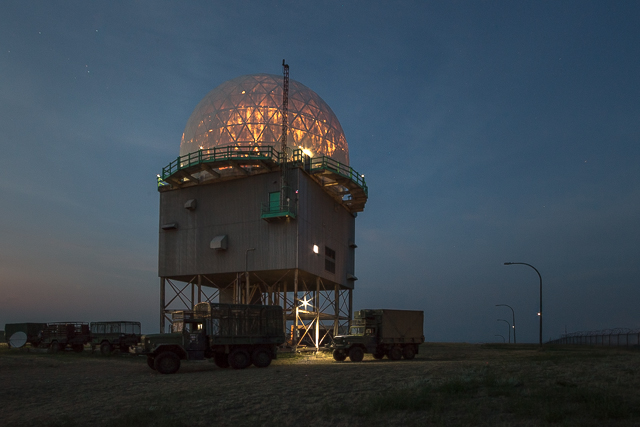
It scanned the skies during the Cold War.
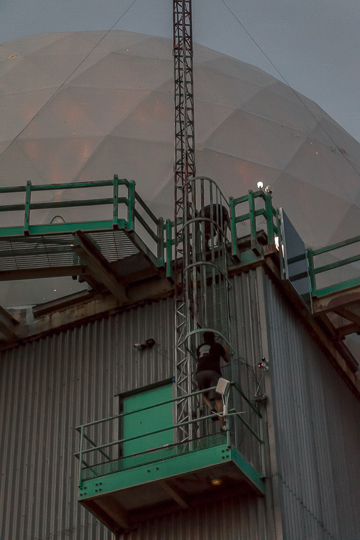
Up to the walkway.
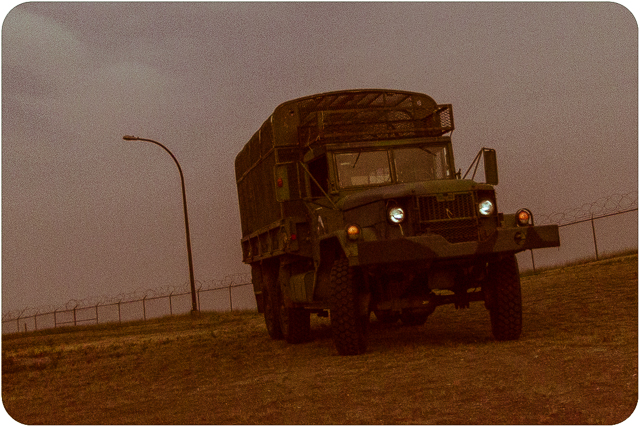
One last shot before we go.

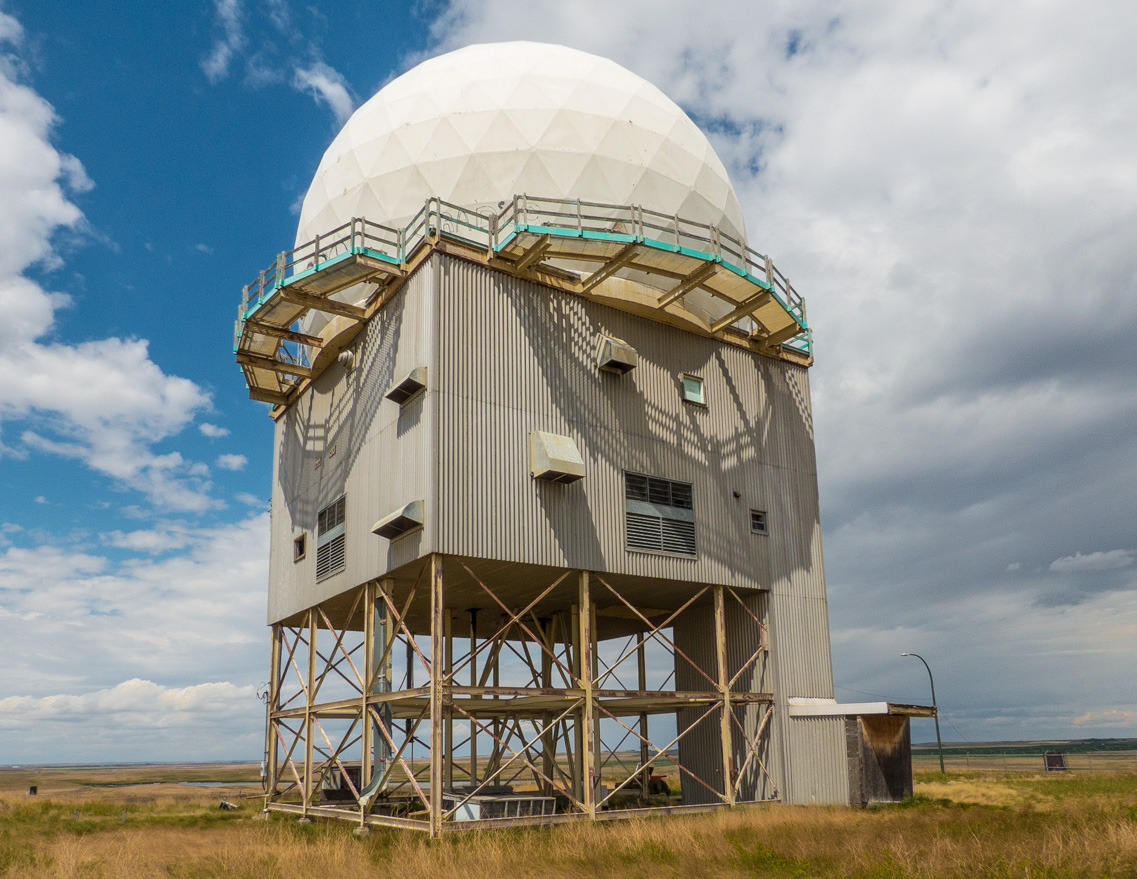

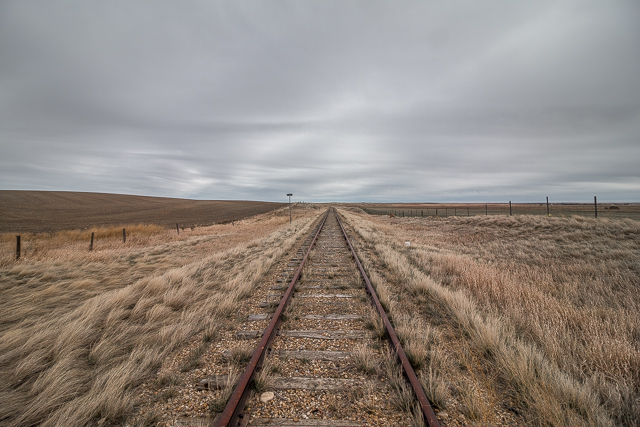
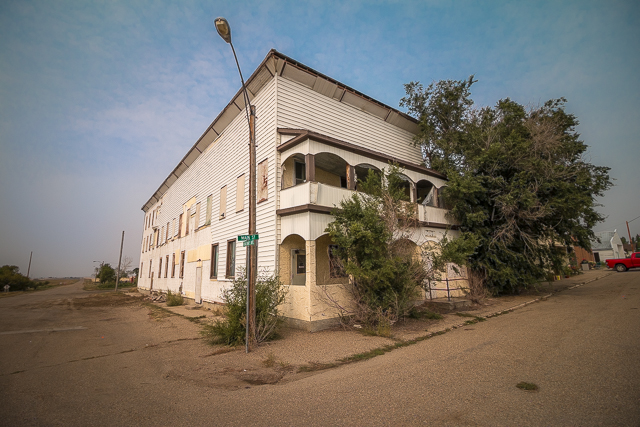
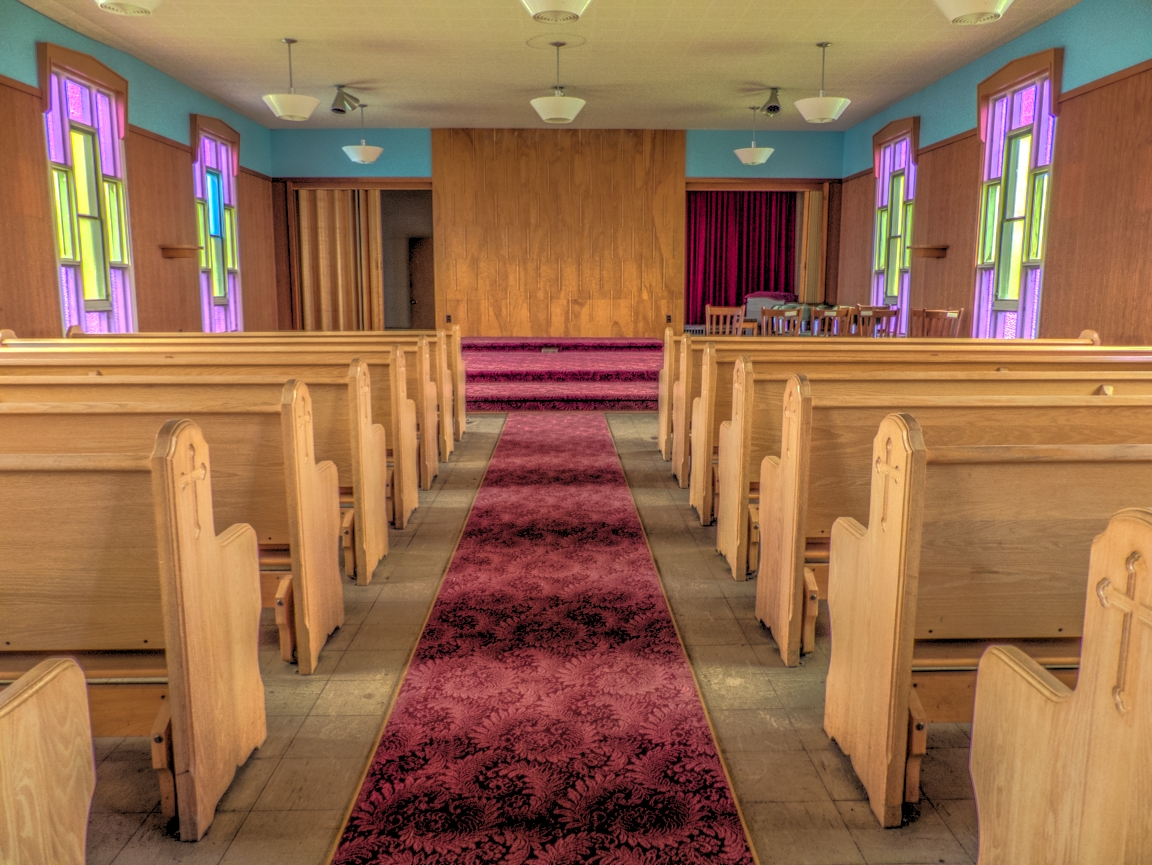
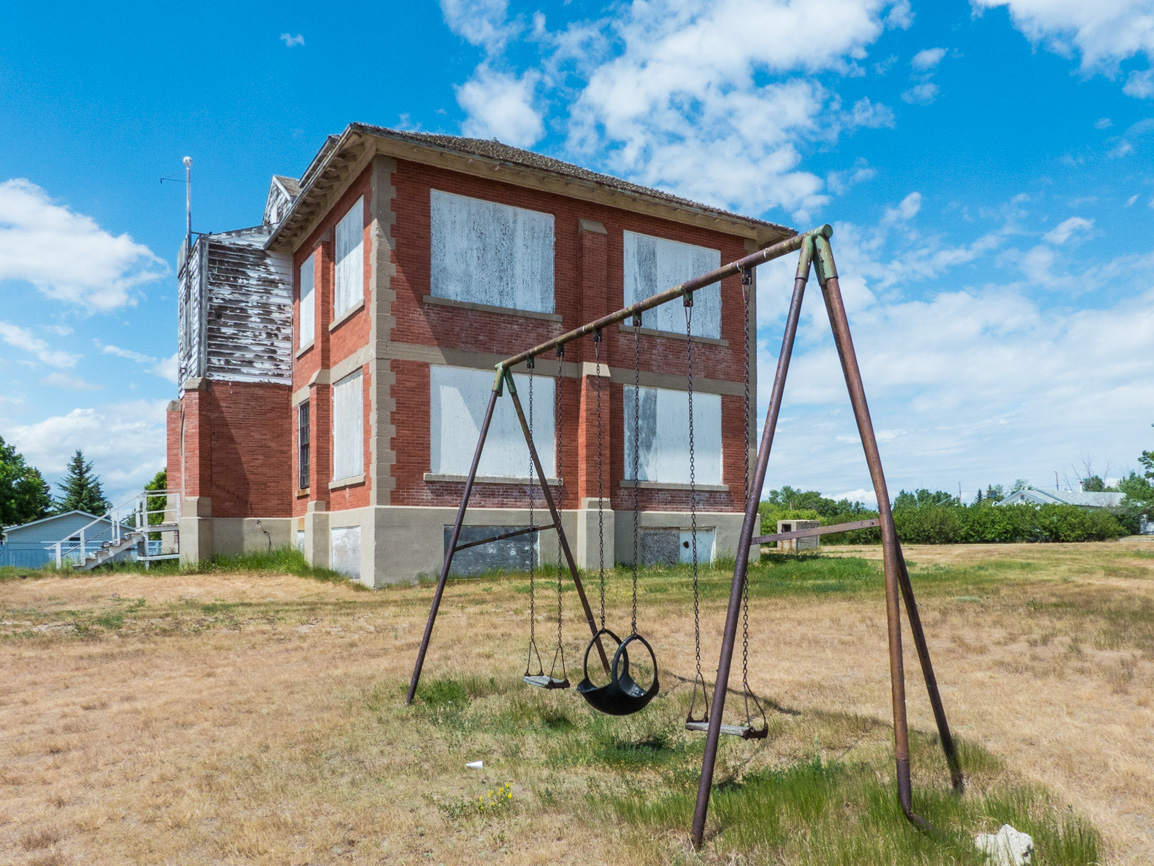
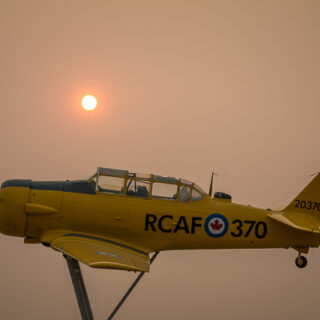
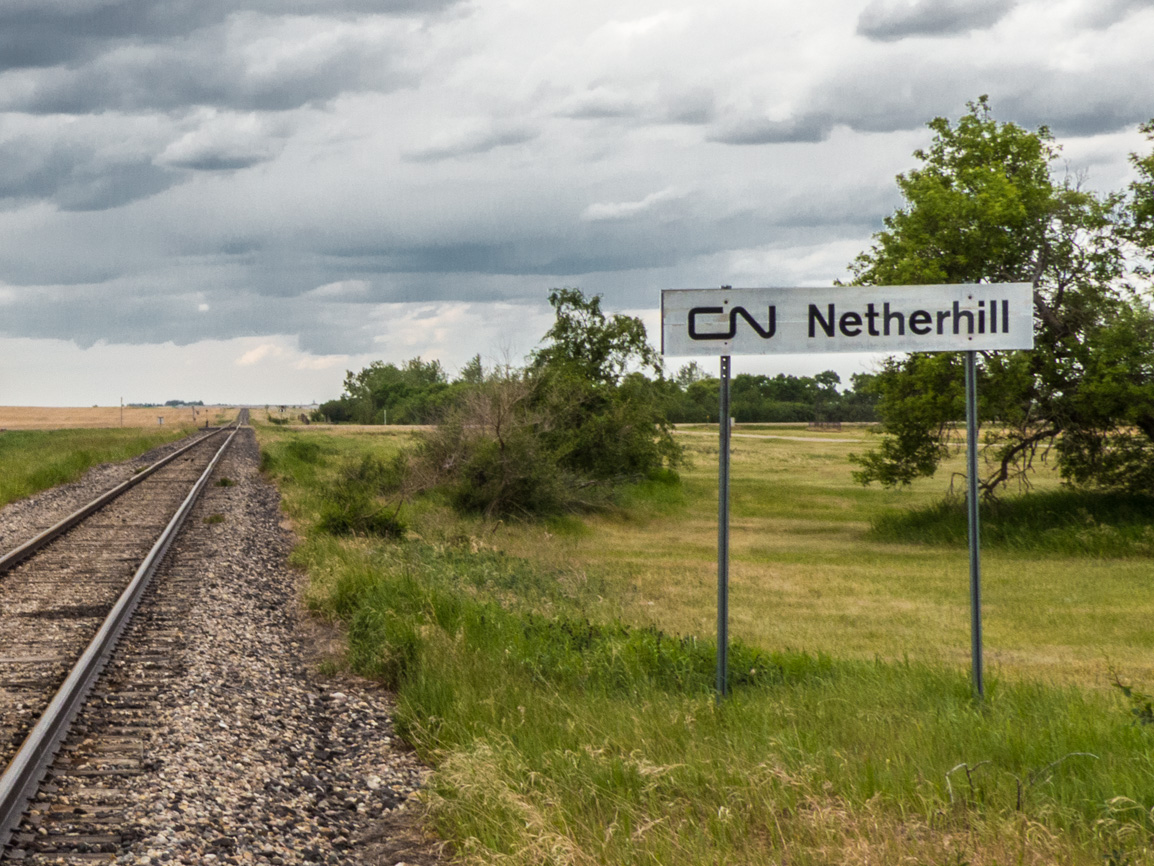
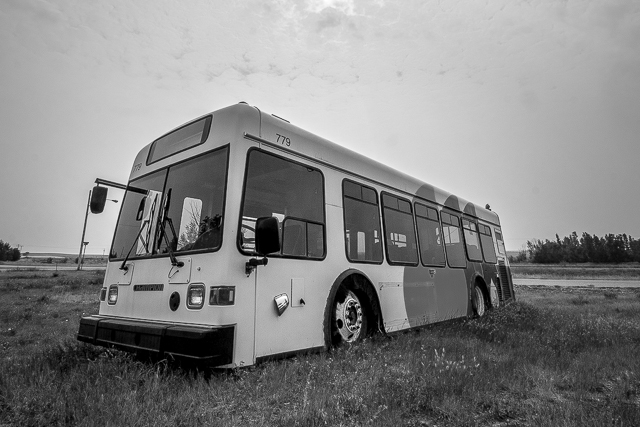
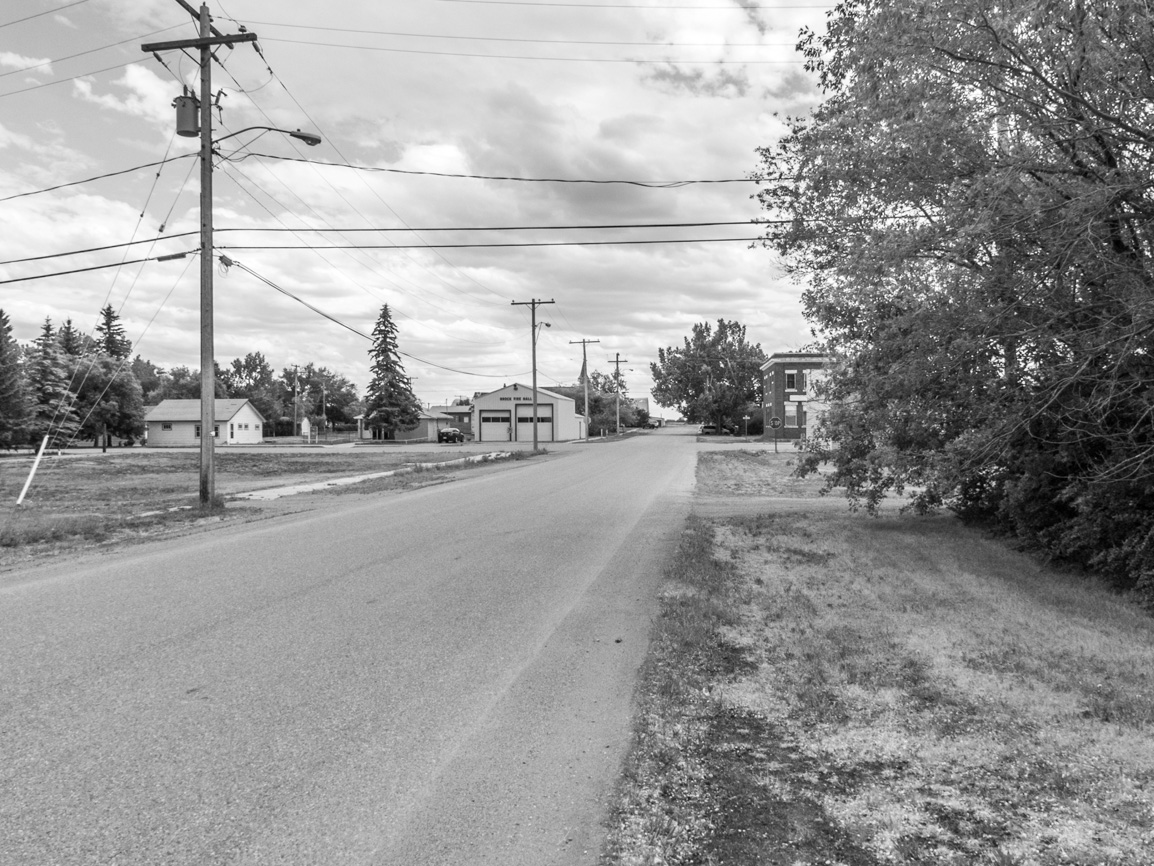

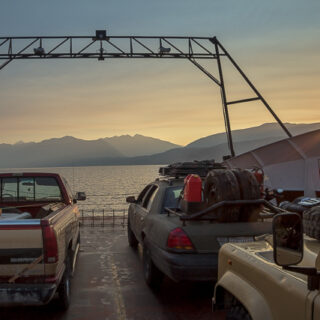
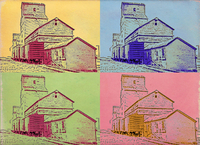







Comments are currently turned off